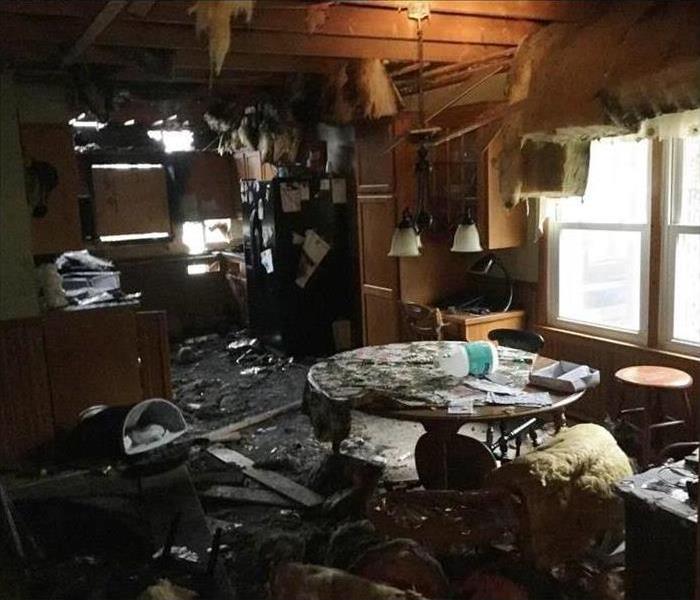Dealing with Mold After a Fire
12/12/2022 (Permalink)
A fire is a traumatic event, and if you've experienced one, you know that it can be difficult to deal with the aftermath. Along with structural damage, smoke and soot can cause mold growth in your home's walls, ceilings, and floors. If not dealt with quickly — and properly — mold growth will spread throughout your home and make rebuilding more expensive than necessary.
Mold can grow after a fire if the area is not dried quickly enough.
Mold is a fungus that grows on organic materials. To grow, it needs moisture and oxygen. It can be found everywhere in nature, but it's difficult to spread without the help of humans.
For example, after a fire occurs in your home, you will have an opening in one of the walls where smoke and heat have damaged the drywall. If this wall isn't repaired quickly enough (and if there are other factors that allow moisture to enter), mold spores could start growing on exposed wood or other materials inside your home.
How mold spreads after a fire.
In addition to the immediate damage caused by fire, there's also the potential for mold growth. Mold spores are everywhere, but a fire creates an environment that makes it easy for them to grow.
If you have a house fire and you're concerned about your home's susceptibility to mold growth, don't fret: there are ways you can ensure that your home doesn't become infested with mold after a fire.
What to do with the contents:
The contents of the room should be removed and discarded if they cannot be cleaned. If they can be cleaned, wash them in hot water and detergent, then dry them in a well-ventilated area. Do not use bleach or other harsh chemicals to clean things like clothes that may have been exposed to smoke or mold spores during the fire. Once everything has been thoroughly cleaned and dried, leave the door open so that air can get in and out of the room for several days until it is completely dry again.
The Fire Damage Restoration Process Includes Mold Remediation
The time it takes for mold to grow in your home depends on a variety of factors, including the size of the room, how much water is present and whether there was smoke damage. In general, however, it grows faster than you might think: 48 hours is common for indoor environments.
Mold is not only unsightly and may even affect your health, but also expensive to remove once it has set in—and insurance companies won't cover it unless they deem it an "act of God" (which can be hard to prove). Even if you do have insurance coverage for fire damage or other structural issues that resulted from a fire event (or any other emergency), you'll want to know what types of materials are covered so that you don't end up paying out-of-pocket just because something wasn't explicitly covered under your policy.
If you're concerned about whether there's visible evidence of mold after an emergency has occurred at home or work—or if there's reason to believe that such contamination could be imminent—call us today!
Call a professional fire restoration company to restore your home after a fire.
You should call a professional fire restoration company to restore your home after a fire.
- Mold can grow fast in a fire-damaged home and spread quickly if not controlled.
- A professional fire restoration company will use specialized equipment to remove mold, contain it, and prevent its reoccurrence.
I hope that this article has helped you understand the importance of dealing with mold in your home after a fire. Fire damage can be devastating, but it’s not something that you have to deal with alone. There are many resources available today for people who experience this type of loss. By calling a professional fire restoration company like SERVPRO or another local business, you will be able to get the help that you need to recover from your loss as quickly as possible so that life can go back to normal once again.





 24/7 Emergency Service
24/7 Emergency Service
